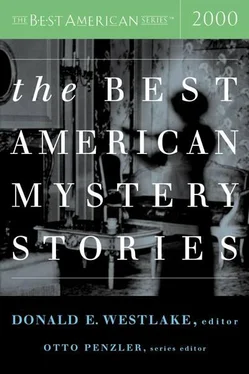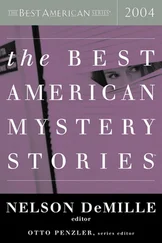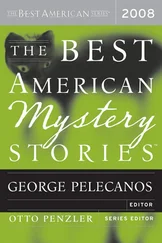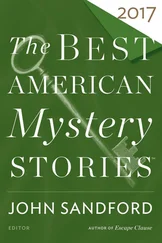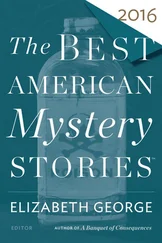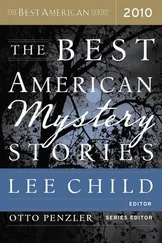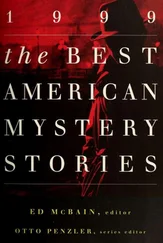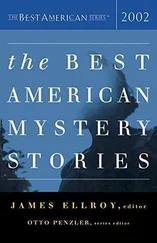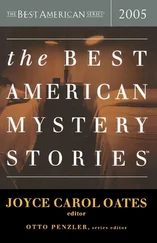The Best American Mystery Stories 2000
(Edited and with an Introduction by Donald E. Westlake
Otto Penzler, Series Editor )
“Miracles! Happen!” by Doug Allyn. First published in Ellery Queen’s Mystery Magazine, December 1, 1999. Copyright © 1999 by Doug Allyn. Reprinted by permission of the author and his agent, James Allen.
“Ghosts” by David Beaty. First published in Mystery in the Sunshine Slate, edited by Stuart Kaminsky, Pineapple Press. Copyright © 1999 by David Beaty. Reprinted by permission of the author.
“Spring Rite” by Tom Berdine. First published in Alfred Hitchock’s Mystery Magazine, December 1, 1999. Copyright © 1999 by Tom Berdine. Reprinted by permission of the author.
“Annie’s Dream” by Bentley Dadmun. First published in Alfred Hitchock’s Mystery Magazine, December 1, 1999. Copyright © 1999 by Bentley Dadmun. Reprinted by permission of the author.
“Motel 66” by Barbara D’Amato. First published in Murder on Route 66, edited by Carolyn Wheat, Prime Crime. Copyright © 1999 by Barbara D’Amato. Reprinted by permission of the author.
“Jumping with Jim” by Geary Danihy. First published in Ellery Queen’s Mystery Magazine, November 1, 1999. Copyright © 1999 by Geary Danihy. Reprinted by permission of the author.
“Triangle” by Jeffery Deaver. First published in Ellery Queen’s Mystery Magazine, March 1, 1999. Copyright © 1999 by Jeffery W. Deaver. Reprinted by permission of the author.
“The Instruments of Peace” by Edward Falco. First published in Playboy, July 1, 1999. Copyright © 1999 by Edward Falco. Reprinted by permission of the author.
“Grit” by Tom Franklin. First published in Poachers: Stones, by Tom Franklin, Morrow. Copyright © 1999 by Tom Franklin. Reprinted by permission of the author.
“Compass Rose” by David Edgerley Gates, First published in Alfred Hitchock’s Mystery Magazine, September 1, 1999. Copyright © 1999 by David Edgerley Gates. Reprinted by permission of the author.
“The Defenestration of Aba Sid” by Robert Girardi. First published in A Vaudeville of Devils, by Robert Girardi, Delacorte. Copyright © 1999 by Robert Girardi. Reprinted by permission of the author.
“The Island in the River” by Chad Holley. First published in The Greensboro Review, Fall 1999. Copyright © 1999 by Chad Holley. Reprinted by permission of the author.
“ICU” by Edward Lee. First published in 999 , edited by Al Sarrantonio, Avon. Copyright © 1999 by Edward Lee. Reprinted by permission of the author.
“Running Out of Dog” by Dennis Lehane. First published in Murder and Obsession, edited by Otto Penzler, Dell. Copyright © 1999 by Dennis Lehane. Reprinted by permission of Ann Rittenberg Literary Agency, Inc.
“Sheep” by Thomas H. McNeely. First published in The Atlantic Monthly, June 1, 1999. Copyright © 1999 by Thomas H. McNeely. Reprinted by permission of the author.
“Dead Rock Singer” by Martha Moffett. First published in The Chattahoochee Review, Winter 1999. Copyright © 1999 by Georgia Perimter College. Reprinted by permission of Lawrence Hetrick, editor.
“Wrong Numbers” by Josh Pryor. First published in Zoetrope, Spring 1999. Copyright © 1999 by Josh Pryor. Reprinted by permission of the author.
“The Guilty Party” by Shel Silverstein. First published in Murder and Obsession, edited by Otto Penzler, Dell. Copyright © 1999 by Shel Silverstein. Reprinted by permission of the Estate of Shel Silverstein.
“Forgetting the Girl” by Peter Moore Smith. First published in The MacGuffin, Spring 1999. Copyright © 1999 by Peter Moore Smith. Reprinted by permission of the author.
“Water Dog God” by Brad Watson. First published in The Oxford American, September/October 1999. Copyright © 1999 by Brad Watson. Reprinted by permission of the author.
The American Mystery Story is flourishing as we approach the new millennium (which begins, of course, on January 1, 2001, as I do not know of a single historical entity who lived in the year o).
Mysteries have changed in both style and content, just as the rest of literature has changed, over the course of the genre’s life, which is just a bit more than a century and a half (assuming that we’re all agreed that the first true mystery short story was Edgar Allan Poe’s “The Murders in the Rue Morgue” in 1841).
Mystery stories used to be mainly puzzles, then they seemed to be mainly private eye stories. Both kinds are still written, and sometimes they are very good, but more stories in this anthology (and the three that preceded it) are stories of character than one has been accustomed to seeing in collections of mystery stories. These are still mysteries, but they are more. In the words of the truly stupid reviewers who condescend when they write about a good mystery, they “transcend the genre.” As readers have become more demanding, contemporary writers have stepped up and produced more complex, more textured, more stylistically original stories.
This evolution has been reflected in the Edgar Allan Poe Awards, given in the short story category by the Mystery Writers of America. Recent winners have been Tom Franklin’s “Poachers” and Michael Malone’s “Red Clay,” neither of which could be classified as a traditional mystery story, and neither of which, I’d be willing to bet, could have been honored a half-century ago. Therefore, as you open this book and begin to read, be prepared for the unexpected, and be ready for some of the best prose being written today.
Not only do crime stories seem to be improving each year, but there seem to be more of them as well. For the first anthology in this series, I read more than 600 stories. The next year the number exceeded 800, and it went up the following year. For the calendar year 1999 I examined more than 1, 100 stories — a task that would have been impossible without the help of Michele Slung, who looks at three times that many stories just to see whether they are mystery-related, much less any good. It seems reasonable to think that with a wider array of material from which to pick, more good stuff will float to the top.
This year’s guest editor, Donald E. Westlake, demonstrated his professionalism yet again. He’s the kind of writer who, if you ask for a story of 5,000 to 6,000 words, will give you one of 5,500. If you say you need it by the fifteenth of the month, you get it on the fourteenth. When I sent the fifty stories that I regarded as the best of the year to him, I apologized for being a little late, as there had been many late submissions. If you can read the stories and make your selections in a month, I hinted, that would be nice. He did it in just over three weeks. And wrote the introduction. And this from a man with more books and movie scripts waiting to be written than you can imagine.
This next paragraph is redundant only to those who have added previous volumes in this series to their collections — and who actually read the foreword. Mysteries are defined for this series as any story in which a crime or the threat of a crime is central to the theme or plot. To be eligible for this anthology, stories must be by an American or a Canadian author and published initially in an American or a Canadian periodical or book. Popular consumer magazines, specialty mystery magazines, literary journals, anthologies, or collections containing initial appearances — all and any can serve as the source for these stories.
To submit a story for consideration in this series, please send a copy of the published story (no originals can be considered) to me at the address below, or just drop me a note to let me know the name of a worthy story and where it has been published. Don’t bother telling me about the mystery magazines and anthologies, as these are scrutinized carefully. I’m unlikely to miss anything in Playboy or The New Yorker, as these have been good sources for first-rate stories. If the story has appeared on the Internet, forward a printed hard copy to me, together with the name of the e-magazine, since I am unlikely to have encountered it. Well, more than unlikely: since I don’t have a computer, it is impossible for me to see these. The earlier in the year I receive a story, the better.
Читать дальше
